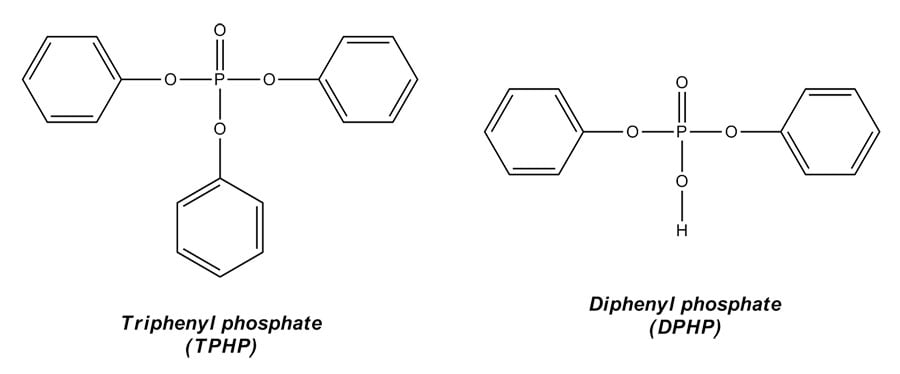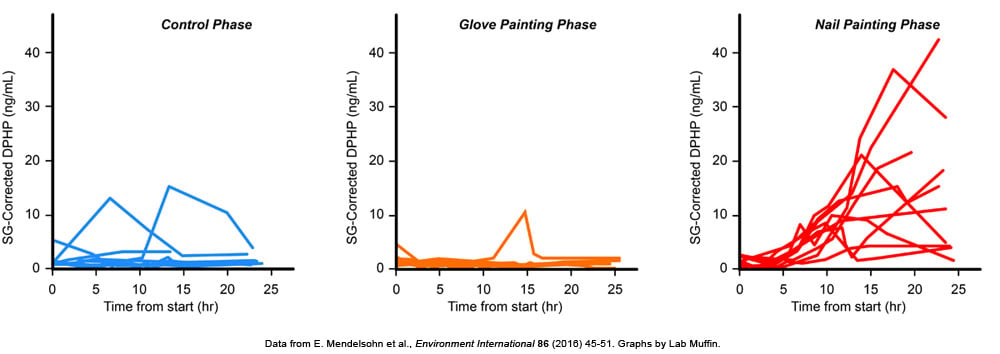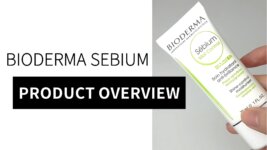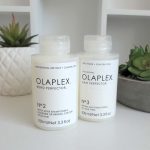The news broke recently that nail polish can harm your health (again!). This time, it’s triphenyl phosphate, a chemical used in nail polish to increase flexibility – it’s also used as a fire retardant. It’s a potential endocrine disruptor (“it could make you fat!”), and was found to be increased around seven-fold – or so it was reported. In particular, the Environmental Working Group (the people behind the “sunscreen is toxic” story every summer) has been the source for most of these articles.
News sites are notoriously bad at reporting scientific studies, so I went back to the source to read the full text of the original paper from Mendelsohn et al.. Unfortunately it’s behind a paywall, so I can’t link you to the full text, but I’ll provide a summary instead.
What’s TPHP and what are its effects?
Triphenyl phosphate (TPHP) is a chemical used in plastics to improve flexibility and as a flame retardant. A handful of animal studies and in vitro studies have suggested that it could be an endocrine disrupter which affects your hormones – in particular, it could potentially affect reproductive health and lipid metabolism (that’s where the “nail polish makes you fat” headline comes from). A couple of epidemiological studies in humans have also found correlations between TPHP and decreased sperm counts. However, all of this is far from conclusive evidence, and as you’ve probably gathered from being on the internet in the past 5 years, it’s almost like every chemical ever can be linked to endocrine disruption if you try hard enough.
In the body, it’s metabolised quickly to a related chemical, diphenyl phosphate (DPHP), and excreted in the urine.
What studies were performed?
The paper reports two main studies, performed with a nail polish containing 0.97% TPHP by weight.
“Cohort 1”
- 16 female students removed any nail polish they were wearing 72 hours before the experiment.
- They then collected one sample of urine (T1).
- 24 hours later, they painted their nails with two coats of the same clear polish.
- 2 – 6 hours later, they collected another urine sample (T2).
- 10-14 hours later, they collected a third urine sample (T3).
“Cohort 2”
- 10 females removed nail polish they were wearing 72 hours before the experiment.
- All urine was collected in the study, either for 24 hours (6 subjects) or 48 hours (4 subjects).
- The participants first collected urine for 24 hours, during which they didn’t use nail polish (Control Phase).
- The subjects were divided into two groups:
- Half painted their nails with 2 coats of the polish (Nail Painting Phase).
- The other half painted synthetic nails attached to latex gloves, then waited an hour before throwing out the gloves (Glove Painting Phase).
- After waiting at least 7 days, the groups swapped over (this is what’s known as a crossover study, where each person essentially acts as their own control).
The urine samples were analysed for DPHP content. To account for dilution effects (e.g. if one person drinks a lot of water), the urine samples were corrected for specific gravity (SG).
Discussion
I don’t have a comprehensive background in designing biological studies or in statistical analysis, but nothing really rings any alarm bells for me (but I’m happy to be corrected if anyone spots any shifty manipulation!).
Does wearing nail polish increase the amount of TPHP in your body significantly?
In terms of concentration, yes, it appears so, in both experiments – to quote the study, “nail polish is a likely source of exposure to TPHP and that use may result in exposures substantially greater than background levels.” (Background means in the absence of nail polish.) It’s worth noting that you have to wear the nail polish, not just inhale it – Glove Painting didn’t cause the same increase. As well as the hard numbers, it’s pretty apparent, visually, from the graphs of urine DPHP from Cohort 2 (which I’ve painstakingly re-graphed to hopefully avoid any awkward debates about Fair Use).
There’s no tomfoolery with the scale of the axes – all the graphs are scaled the same. There are a couple of blips in the data (the couple of randomly high DPHP samples in the control phase and the high DPHP sample in the glove painting phase that sticks out like a sore thumb) but I think it’s pretty hard to downplay the trend here.
But is it significant in terms of physiological effects?
In other words, will this be enough to affect your health? The annoying thing is… we don’t know. The amounts we’re talking about here are tiny – we’re looking at millionths of a gram here. 6 times a tiny amount is still a tiny amount, and although tiny amounts of toxic substances can be toxic (see for example, botox), tiny amounts of other substances can be fine (see e.g. the tiny amounts of mercury in vaccines, lead in pretty much everything). There isn’t enough data on the effects of TPHP in humans to say anything conclusive.
As the researchers wrote:
“More research is needed to determine whether our reported levels of exposure to TPHP from nail polish use post a risk to human health.”
Should I be worried/throw out my nail polish/cry quietly in a corner because TPHP is inescapable?
For now, I would say no – until there’s evidence that these tiny changes will actually affect your health in any meaningful way, there really isn’t any cause for alarm.
- DPHP is found in low concentrations in pretty much everyone’s urine. Hence, even if you were going to get rid of TPHP-containing nail polish, it won’t help much. Additionally, the researchers measured the TPHP in 3 polishes which didn’t list TPHP in the ingredients list – they found it in 2 of them (at 0.49% and 0.61%). Looking at the ingredients list doesn’t help here, it seems.
- The study hasn’t been reproduced, and the sample sizes are quite small, the amounts we’re talking about are tiny and there’s close to no evidence that these tiny changes do anything significant to you.
- The animal studies showing the adverse effects of TPHP use way larger amounts, and exposure was much more intense – rats were fed TPHP daily, for example, and zebrafish were literally swimming in water laced with TPHP.
- The fact that it’s being metabolised and excreted so quickly is actually encouraging – it’s being efficiently processed by your body’s natural detoxifying systems.
- All in all, eliminating TPHP-containing nail polish is really, really far down the list of impactful lifestyle changes you can make to improve your health.
Additional Notes
- News sites keep using the phrase “fire retardant” like it’s a scary term – is it, really? Water is an amazing fire retardant too.
- Of the (rather few) polishes that the researchers tested, clear polish had higher levels of TPHP than coloured polish.
- Nails aren’t very permeable to chemicals, generally. The researchers report that they’re unsure whether TPHP enters the blood through the nails or the skin around the nails or something else (like nail biting) – my money is on the skin around the nails (i.e. not being able to colour within the lines when nail painting).
- It’s estimated that adult women paint their nails on average once a week – really?! I paint my nails once a week and I’m a card-carrying addict… maybe the swatchers bump up the average for the rest of us? Also, it’s been estimated in previous studies that on average, 0.3 g of nail polish is used per application.
- This write-up by the executive director of the EWG, Heather White, is surprisingly full of scaremongering and irrational thinking. I was actually starting to warm up to the EWG since they had a toxicologist on this paper, and the paper itself seems pretty reasonable in its conclusions… but then I read this post and stopped wondering if I should start taking them seriously. Key tinfoil highlights:
-
- “The conclusion is inescapable: any girl who paints her nails stands a chance of coming into contact with a potential hormone disruptor.” (Yeah… breathing does that too. DPHP is found in up to 90% of urine samples.)
- “How can the cosmetics industry get away with adding TPHP to popular products? The federal laws meant to regulate toxic chemicals in cosmetics and other consumer products are broken.” (TPHP is a toxic chemical now?)
- “The “mani-pedi” culture endangers salon workers and manicurists, too.” (It does… but TPHP is the least of their worries, so why are we discussing this here again?)
- Of course, the EWG have now started a premature petition to remove TPHP from nail polish, reaffirming my lack of faith in their ability to science and use common sense. I mean, really? After all the sensible “be alert but not alarmed” conclusions from the authors of the paper? And wasn’t TPHP added to polish to replace phthalates, after a scare campaign about them being endocrine disruptors took hold? Sure, let’s move onto a new plasticiser with even more poorly understood health effects!
References
E Mendelsohn, A Hagopian, K Hoffman, CM Butt, A Lorenzo, J Congleton, TF Webster and HM Stapleton, Nail polish as a source of exposure to triphenyl phosphate, Environmental International 2016, 86, 45-51.
Wellek S, Blettner M. On the proper use of the crossover design in clinical trials: part 18 of a series on evaluation of scientific publications. Dtsch Arztebl Int. 2012;109(15):276-281. doi:10.3238/arztebl.2012.0276
Meeker JD, Stapleton HM. House dust concentrations of organophosphate flame retardants in relation to hormone levels and semen quality parameters. Environ Health Perspect. 2010;118(3):318-323. doi:10.1289/ehp.0901332
Meeker JD, Cooper EM, Stapleton HM, Hauser R. Exploratory analysis of urinary metabolites of phosphorus-containing flame retardants in relation to markers of male reproductive health. Endocr Disruptors (Austin). 2013;1(1):e26306. doi:10.4161/endo.26306









Thank you for posting this. I think a lot of people needs to read it
Well well well, after being told about bacon is bad for your health and to limit it to a treat once a fortnight I think I’ll pass on taking current thinking (scare mongering) to heart! Nail polish is a source of joy and pretty fingers and toes a necessity, besides if we listen to all the rhetoric we will be sitting in the corner twiddling our thumbs. Thank you for bringing this to our attention it was interesting.
If it interests you, here’s what Doug Schoon wrote about this study and subsequent scaremongering by the environmental group: https://www.facebook.com/notes/victoria-lys-hunter/doug-schoon-speaks-regarding-tphp-in-nail-polish/10153103612317031
I agree with Doug on most points – the EWG reported this with their usual mix of alarmist distortion and misinterpretation, which means their quotes are pretty much useless. I do disagree with him about whether the study and the study’s conclusions were flawed/problematic though:
I don’t think it does, really – the background vs. nail polish measurements show otherwise.
I think Doug misread the study here – it’s 101 background samples from 36 people, not 101 people…
I’m a bit more cautious here here – 6 times a tiny number could be something, or could be nothing – I don’t think we have enough information yet to know (though I’m leaning towards probably nothing until we have more information).
This actually isn’t that uncommon – research scientists focus on narrow areas, so if an academic is the only researcher in that field they tend to be attached to a lot of papers in that area…
It would’ve been nice, but they didn’t really need to – they collected a control set for each subject, so they had a urine sample set for each person where there was no nail polish vs polish. Since only one variable changed (assuming the people didn’t change lifestyles radically during the study) and it’s pretty unlikely that all of the subjects suddenly encountered a freak TPHP cloud, the environmental exposure angle isn’t too problematic.
I don’t see anything immediately problematic with their statistical methods (though I don’t have a strong background in statistics). All biological studies use statistical manipulation, so I don’t think this is a point against the study. The study also does show the pre-stats data in graph form (e.g. the graphs I’ve posted) – it’s pretty convincing already tbh.
I completely disagree with this – the crossover design they used for Cohort 2 means each person acts as their own control and is superior to using a separatebcontrol group. The crossover design means you’re comparing Maria wearing nail polish vs. Maria with no polish 3 weeks ago, which would give a better comparison than Maria wearing nail polish now vs. Amy not wearing polish now (what Doug suggests).
It’s not within the scope of the study – the study wasn’t designed to see whether normal home usage of nail polish leads to TPHP exposure, and normal usage does mean a relatively unskilled person not painting within the lines.
TL;DR summary: Study pretty good, raises questions that need more research; EWG need to pipe down.
Great post. I thoroughly enjoyed reading it. Looking at the “nail painting phase” graph, I’d really like to see the error margins on those averages. It looks to me like a few people have had major increases in the levels 15-25hr afters applying nail polish (the peak perhaps for most of the individuals) but for a number of individuals it looks as though the levels haven’t increased by very much at all. Though it’s hard to tell I suppose and I’d need to see the data. Anyway as you correctly state, further research is required to determine what levels of TPHP are harmful and length of exposure too. I mean a small increase once may not be harmful, but a small increase every time you paint your nails (for some people more than once a week) over the course of a life time or a prolonged period of time (even if the duration of “exposure” is short) may have adverse effects. In either case, as you’ve pointed out, the findings from this article can’t be used to make conclusions on either of these points.
There’s some info on the total mass excreted in the 24 h after painting, but it’s for all participants overall, not for each subject:
“The urinary DPHP mass excreted over 24 h in the nail painting phase was 11.2 times that of the control phase (95% CI: 6.10, 20.61; p b 0.0001)”
It would be interesting to see if some subjects didn’t have any increases!
Haha, one of the authors is named CM Butt. /maturity
Really good post though, I can’t stand fear-mongering crackpots like food babe etc who start petitions with no scientific base!
Food Babe is terrible! If you want a good laugh, go to the Food Hunk Facebook page.
I really appreciate this. I’ve become addicted to using nail polish. It’s the only way I can keep my nails from breaking and shredding. Plus I find doing my nails to be very relaxing. I also thought the sample size of the study was pretty small. I’m glad that you broke it down so clearly. Thanks.
Do you want to read the study? because I can get it through my university library and I can e-mail it to you, if you’re interested.
Cancer patients whose nails begin to rot from treatment, and would absolutely love to be able to paint their nails, are strictly prohibited by their doctors from doing so. With this in mind, the stuff can’t be great for you. I type this while waiting for my own nails to dry. That said, I’m surprised at such a dismissive tone towards a chemical that we very much would not want children sniffing.
That isn’t because of the TPHP though, and plenty of cancer patients aren’t told to not paint their nails…
The dose makes the poison – I’d be fine with children sniffing all sorts of things that are harmful at high concentrations, if the concentration is sufficiently low. E.g. water is toxic and causes drowning at 100% concentration…
Thank you for this post. I’ve been trying to figure out which nail polish chemicals to avoid among the ridiculous proliferation of n-free labels and fear-based advertising. I had set aside my favorite Essie top coat with TPHP but other plasticizers don’t work nearly as well. I missed how vanishingly small the amounts of TPHP were in the study and the complete lack of follow-up literature. I just looked up the CIR report and it’s one of the least concerning ones I’ve ever read.
Yeah, the fearmongering around nail polish is quite intense! You might also like my post on the Not So Pretty nail polish episode: Nail Polish, Miscarriages, Cancer? Not So Pretty Episode 2 (with video)